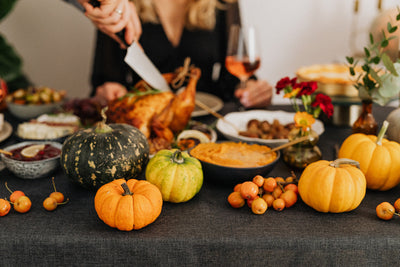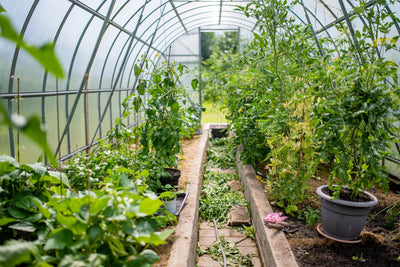For decades, America has relied on grocery stores, industrial farms, and supply chains to feed our families. It’s convenient, until the system cracks. In recent years, we’ve seen rising food prices, store shortages, recalls, and an alarming increase in ultra-processed ingredients hidden in everyday groceries. We’ve reached a point where the average person no longer knows where their food comes from, let alone how to grow it.
Somewhere along the way, we lost the skills that once defined us. Our grandparents could plant, harvest, can, and store a year’s worth of food. They saved seeds, shared them with neighbors, and passed varieties down through generations. Today, many of those heirloom seeds, and the knowledge tied to them, are disappearing.
But there is a growing shift happening across the country. People are stepping away from the dependence model and back toward self-sufficiency. They are reclaiming their health, their independence, and their food security, one garden at a time.
This movement isn’t about going “off-grid” or rejecting modern convenience. It’s about something much bigger:
Table of contents
Section One: Why Health Begins With Food Freedom
If the food system fails, everything fails.
Grocery stores operate on tight, just-in-time supply chains. If shipping slows down or crops are damaged, shelves empty quickly. We’ve seen this firsthand, sometimes overnight.
But beyond shortages, the bigger issue is quality.
Most store-bought produce is:
-
Grown for shelf-life, not nutrition
-
Picked before ripening
-
Transported thousands of miles
-
Sprayed with preservatives and coatings
-
Depleted in vitamins and minerals compared to 50 years ago
Freshness matters, and the most nutrient-dense food you can eat is the food you grow yourself.
Meanwhile, processed food consumption in America is at an all-time high. Ingredient labels are filled with seed oils, artificial preservatives, GMO fillers, and additives our bodies were never meant to digest. Chronic disease and inflammation have become normalized, not because people are lazy or careless, but because the food system has shifted away from nourishment.
Food security is health security.
When you control your food, you control your health. And the most direct path to true food freedom begins in your backyard (or balcony, patio, windowsill, every bit counts).

Section Two: The Power of Heirloom Seeds
Not all seeds are created equal.
Most seeds sold in big-box stores today are hybrid varieties, engineered for uniformity and long shelf life. Hybrids can grow food, but they cannot reliably produce seeds you can replant. When you save hybrid seeds, the next crop will not grow true-to-type.
This creates dependency.
Heirloom seeds work differently.
-
They are open-pollinated, meaning nature, wind, bees, birds, does the pollinating.
-
They grow true every season, so you can save seeds and plant them again.
-
They are genetically diverse, making them more resilient in changing climates.
-
And most importantly, they are nutritionally dense and flavorful.
Heirloom seeds are living history. Many trace back 50, 100, even 300+ years, kept alive by families who believed food should be real, nourishing, and resilient.
When you choose heirloom seeds, you are choosing:
-
Independence instead of dependency
-
Nutrition instead of convenience
-
Tradition instead of industrial control
This is seed sovereignty.
And it is one of the most empowering forms of self-reliance a household can practice.
Section Three: Building a Survival Garden From Scratch
You don’t need acres of land or farming experience to start. You only need willingness, and a little guidance.
Start small.
One raised bed, a few containers, or a small patch of soil is enough to learn and build confidence.
Step 1: Prepare Your Growing Space
Choose one approach:
-
Raised beds – Easy to maintain, warms faster in spring
-
No-till garden – Restores soil health naturally over time
-
Container gardening – Perfect for patios and small yards
Healthy soil = healthy plants. Add compost, worm castings, or well-aged manure to enrich your foundation.
Step 2: Choose High-Yield Heirloom Staples
These crops are efficient, calorie-dense, and store well:
|
Crop
|
Benefits
|
Why It’s Ideal
|
|---|---|---|
|
Beans
|
High protein, easy to dry and store
|
Replant seeds year after year
|
|
Potatoes
|
Filling, long shelf life
|
Grows in buckets, bags, or beds
|
|
Squash
|
Stores for months
|
One plant goes a long way
|
|
Carrots
|
Vitamin-rich
|
Grow nearly year-round in many climates
|
|
Tomatoes
|
Preserves easily into sauce
|
Flavor and nutrients far exceed store-bought
|
|
Herbs
|
Medicinal + culinary
|
Easy, fast-growing, perfect for beginners
|
These form the core of a survival garden, the garden that can feed your family, not just garnish your dinner.
Where to Get Reliable Heirloom Seeds to Start Your Survival Garden
If you’re ready to take the first step toward food independence, the foundation of your garden starts with good seeds—seeds that are open-pollinated, non-hybrid, and capable of being regrown year after year. That’s where Seed Armory comes in.
Seed Armory specializes in heirloom seed collections designed for long-term sustainability and survival gardening. Their seed vaults and individual seed packets are carefully curated to ensure that each plant can be grown, harvested, and replanted from seeds you save yourself. This is the key difference between true self-sufficiency and dependency on commercial seed supply chains.
Why Seed Armory Stands Out
-
100% Heirloom, Non-GMO Seeds — You can save seeds each season and become fully self-renewing.
-
High-Yield, Staple Crop Focus — Packs are built around foods that feed a family: beans, squash, tomatoes, potatoes, greens, grains, and storage crops.
-
Prepared for Long-Term Storage — Many of their seed vaults are packaged for longevity, making them ideal for stocking up or emergency readiness.
-
Starter-Friendly Garden Packs — You don’t need prior gardening experience; they offer seed bundles tailored for beginners and small spaces.
Best Options to Start Your Garden
-
Heirloom Seed Vaults – Complete collections for long-term sustainability and emergency food security.
-
Crop-Specific Seed Packs – Choose by climate, growing region, or food goal (high-calorie, medicinal herb garden, kid-friendly growing, etc.).
-
Preparedness & Storage Kits – Perfect for pantry shelving, root cellars, bug-out locations, or seed banks.
Whether you’re building a large backyard garden or simply want to start with a few raised beds, Seed Armory has kits suitable for beginners and experienced growers alike.
Explore heirloom seed vaults and starter seed packs here:
Rebuilding America’s health and self-reliance starts with planting one seed—and saving the next.
Section Four: The Self-Sufficiency Lifestyle
Growing food is only the first step. The next step is resilience.
1. Learn to Preserve Food
Canning, fermenting, dehydrating, and root-cellaring extend your harvest well into winter.
2. Save Your Own Seeds
The real power of heirloom gardening is that your garden becomes self-renewing. Each year, your seeds
-
adapt to your soil
-
adapt to your climate
-
become stronger, hardier, and more productive
This is nature’s version of customized performance.
3. Share and Teach
Self-sufficiency grows best when shared.
-
Trade seeds
-
Teach children to grow
-
Build local food networks
-
Support local farmers and seed stewards
Rebuilding food independence starts with community, not corporations.
The Movement Begins at Home
We don’t need to wait for policy, programs, or permission to make America healthy again. We simply need to begin growing real food, one seed at a time.
Planting a garden is an act of resilience.
Saving seeds is an act of independence.
Feeding your family from your own soil is an act of freedom.
This is how we take back our health, our communities, and our future.
Plant one seed. Change everything.














